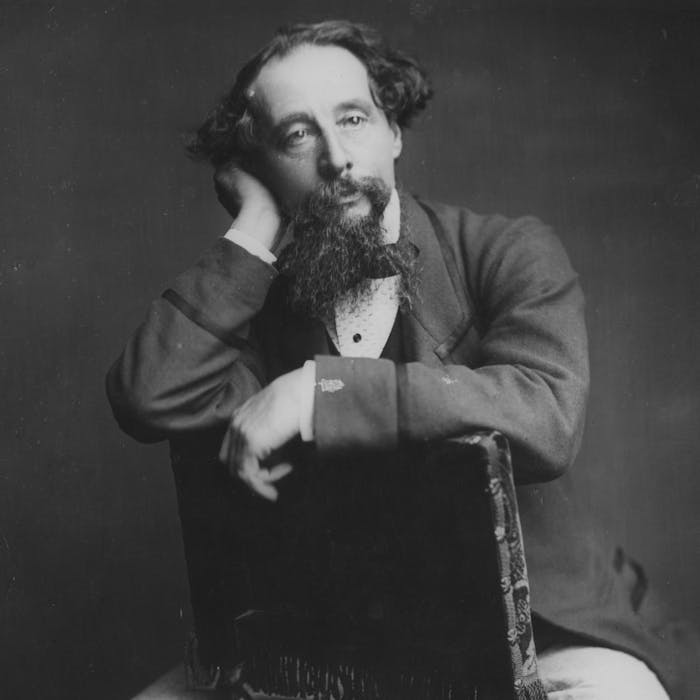
Charles Dickens - prolific Victorian writer
Charles Dickens was an English writer and social critic, whose works enjoyed unprecedented popularity in the 19th century. He created some of the world's best-known fictional characters - such as Ebenezer Scrooge, Mr Pickwick and Fagin - and is regarded as one of the greatest novelists of the Victorian era. To date, over 400 big-and small-screen adaptations have been made from his novels, as well as numerous stage productions.
Dickens was born in Portsmouth in 1812, but spent much of his childhood in Chatham, Kent. The growing family were plunged into poverty in 1822, after moving to Camden, north London, and in 1824, his father John, a naval clerk who often spent beyond his means, was sent to debtor's prison. This was the infamous Marshalsea prison in Southwark, which later became the setting for Dickens’ novel Little Dorrit.
12-year-old Charles was sent to work in Warren's blacking warehouse, where he spent 10 hours a day pasting labels onto pots of shoe polish. His modest earnings went towards his family's debts, and to his own humble lodgings. It was during this period that Dickens developed a love for walking through London at all hours, allowing him to develop an in-depth knowledge of the city and its characters which informed so much of his writing.
An inheritance allowed the Dickens family to settle their debts, and leave Marshalsea - and Charles was able to go back to school, from whence he undertook an apprenticeship at a solicitor's office. He took to journalism, becoming a reporter for the Morning Chronicle in 1833, for whom he covered cases in the Courts of Law and debates in the House of Commons.
Charles Dickens published his first story in the Monthly Magazine in 1833, followed by Sketches by "Boz," - Illustrative of Every-day Life and Every-day People, a collection of short pieces originally published in various newspapers and other periodicals between 1833 and 1836. His first novel, The Pickwick Papers, was similarly published in serial form from the same year, and was hugely successful. This was the year he married Catherine Hogarth, who bore him 10 children, before their 1858 separation.
Many of Dickens’ most famous and enduring works, such as Oliver Twist, David Copperfield and A Tale of Two Cities were published in serialised format over a number of months or weeks. Seen as a highly perceptive social commentator, he brought to life his own experiences and exposure to, poverty, injustice and unsatisfactory working conditions.
His morality fable A Christmas Carol, published in 1843, is credited with underpinning the Victorian idea of Christmas.
Dickens' many novels were accompanied by weekly periodical articles, travel books and plays. In his later years, he also spent a lot of time travelling throughout the UK and abroad, giving readings of his most popular works. It was during his ‘farewell readings’ – his last tour of England, Scotland, and Ireland - that Dickens suffered a mild stroke in 1869, and a further more serious and fatal one a year later whilst at his home at Gad’s Hill Place at Higham, Kent, on 8 June 1870, whilst working on his final, unfinished novel Edwin Drood. He was 58.
Dickens was buried in the South Transept of Westminster Abbey, known as Poets’ corner, and bestowed with the following epitaph: “He was a sympathiser with the poor, the suffering, and the oppressed; and by his death, one of England’s greatest writers is lost to the world.”
Further reading
Links to external websites are not maintained by Bite Sized Britain. They are provided to give users access to additional information. Bite Sized Britain is not responsible for the content of these external websites.
